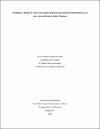Mostrar el registro resumido del documento
Desdibujar y dibujar el relato oral: análisis del proceso de traducción intersemiotica en la obra de docuficción de Rubén Mendoza
| dc.contributor.advisor | Galindo Cardona, Yamid |
| dc.creator | Ferro-Gómez, Ana María |
| dc.creator | Aguirre-Cuadros, Luisa Fernanda |
| dc.creator | Orbegozo-Albarracín, Michael Stiven |
| dc.creator | Olarte-Arciniegas, Cristian Erney |
| dc.date.accessioned | 2020-05-18T14:16:58Z |
| dc.date.available | 2020-05-18T14:16:58Z |
| dc.date.created | 2020-05-18 |
| dc.identifier.uri | http://repositorio.uniagustiniana.edu.co//handle/123456789/1219 |
| dc.description | El objetivo principal del texto es establecer un modelo de traducción intersemiotica aplicable a proyectos cinematográficos de corta y larga duración que tengan como punto de partida testimonios orales y que deseen llevarlo al film. Para llevar a cabo este proceso se identificaron teorías de análisis tanto del relato como la traducción intersemiotica; que se aplicaron a procesos creativos ya realizados como lo son los filmes de Rubén Mendoza Tierra en la Lengua y Los cuadernos de Silvio y en el proceso de creación del cortometraje Cerdos. Esta estructuración define una compilación analítica y de información de quien brinda su vida o testimonio y a partir este se logra comprender el proceso de representación de la realidad, entendiendo que las traducciones de sistemas no generan una fidelidad del relato en la pantalla, sino que permiten mantener a partir de los símbolos, iconos y signos similitudes con el testimonio recopilado. |
| dc.description.abstract | The main objective of the text is to establish an intersemiotic translation model applicable to short and long-term cinematographic projects that have oral testimonies as a starting point and wish to take them to the film. In order to carry out this process, theories of analysis of both the story and the intersemiotic translation were identified; that were applied to creative processes already carried out such as Rubén Mendoza Tierra's films in the Language and Silvio's notebooks and in the process of creating the short film Pigs. This structuring defines an analytical and information compilation of those who provide their life or testimony and from this it is possible to understand the process of representation of reality, understanding that the translations of systems do not generate a fidelity of the story on the screen, but allow to maintain From the symbols, icons and signs similarities with the collected testimony. |
| dc.format.mimetype | application/pdf |
| dc.language.iso | spa |
| dc.rights | Attribution-NonCommercial-NoDerivatives 4.0 Internacional |
| dc.rights | Attribution-NonCommercial-NoDerivatives 4.0 Internacional |
| dc.rights.uri | http://creativecommons.org/licenses/by-nc-nd/4.0/ |
| dc.source | instname:Universitaria Agustiniana |
| dc.source | reponame:Repositorio Institucional UniARI |
| dc.subject | Traducción intersemiotica |
| dc.subject | Representación |
| dc.subject | Testimonio oral |
| dc.subject | Análisis |
| dc.subject | Modelo |
| dc.title | Desdibujar y dibujar el relato oral: análisis del proceso de traducción intersemiotica en la obra de docuficción de Rubén Mendoza |
| dc.type | info:eu-repo/semantics/bachelorThesis |
| dc.rights.accesRights | info:eu-repo/semantics/openAccess |
| dc.rights.acceso | Abierto (Texto Completo) |
| dc.subject.lemb | Semiótica cinematográfica |
| dc.subject.lemb | Lenguaje cinematográfico |
| dc.subject.lemb | Cinematografía |
| dc.subject.keyword | Intersemiotic translation |
| dc.subject.keyword | Representation |
| dc.subject.keyword | Oral testimony |
| dc.subject.keyword | Analysis |
| dc.subject.keyword | Model |
| dc.type.hasVersion | info:eu-repo/semantics/acceptedVersion |
Archivos en el documento
Este documento aparece en la(s) siguiente(s) colección(ones)
 Esta obra está bajo licencia internacional Creative Commons Reconocimiento-NoComercial 4.0.
Esta obra está bajo licencia internacional Creative Commons Reconocimiento-NoComercial 4.0.

